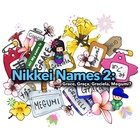In Broome, Western Australia, where I live, many Japanese people have settled since the 1880s, including pearl shell divers, doctors, general merchandise store owners, inventors, photographers, laundry shops owners, financiers, taxi drivers, restaurateurs, boarding house operators, tombstone carvers, carpenters and boatbuilders. Up until WWII, the centre of the town was known as “Jap Town.” Traces of this Japanese history remain scattered throughout Broome, and second, third and fourth-generation Nikkei-jin (descendants) still live here. Today, Broome is known for its multicultural community: it’s a place where Japanese, Chinese, Filipino, Aboriginal, Malaysian and white Australians (and a mix of these races) call home.
I first came to Broome in August 2007 as a getaway from my busy life in Osaka, Japan, where I studied and worked at a design studio. The red pindan soil, mangrove trees and vast sky formed three layers of red, green and blue. The landscape, along with the slowly flowing time and the kaleidoscope of races, offered more than enough to pique my interest and compel me to stay. I discovered my direction in Broome, and decided to continue my research and practice in art and design there.
I formed connections with Japanese and Nikkei-jin in Broome—hearing the real stories of old, local families, and learning about the history of Japanese people in Broome, and their ties to Japan. For my art, I learnt the almost lost, traditional practice of making fishermens’ nets from an elderly Japanese man who had worked as a pearl diver since 1960s. This led me in a new artistic direction.
In the early days after arriving in Broome, my name, Tomoko, was often mispronounced. People would call me Tamako, Tomuko, Tomeko, Tomiko or Tomako, and it was rare for my name to be pronounced correctly. The closest approximation was something like “Tomo~ko”, which sounded like potato or tomato or even something French; I could hardly recognize it as my own name. I remember repeatedly spelling out my name—T-O-M-O-K-O—over and over again to explain the correct pronunciation.
Some people tried calling me “Tommy,” and others simply could not say Tomoko correctly and asked if it was okay to call me “Tom” instead. Each time, I firmly declined, saying, “No, that's not my name.”
Although it took some time, many Nikkei, Asians and Aboriginal people in town accepted my name as naturally as if I were in Japan. There was no need for me to repeat my name multiple times—they accepted it right away and often said, “Oh, you are Japanese.”
I later I realized the reason might be due to the presence of Tomoko Matsumoto, who is a second-generation Nikkei with a Japanese father and an Aboriginal mother. Her father worked as a pearl shell diver until pre-WWII. I heard that she spoke Japanese when she was a child, because her father couldn’t speak much English, so her parents spoke Japanese to each other at home. Because of her, the name Tomoko has become recognised as a Japanese name within the long-standing local community in Broome. Tomoko Matsumoto and I have formed a good friendship due to our shared Japanese name and heritage.
The other day, Tomoko Matsumoto and I ran into each other in a hospital waiting room, and while we were chatting, a nurse opened the door to the examination room and called out, “Next: Tomoko.” Both of us looked at each other and said, “Which Tomoko? Matsumoto or Yamada?” It was a charming coincidence.
Later, I told Tomoko Matsumoto that my name was given to me by my grandmother, and the kanji for my name (智子) means “wisdom child.” Most Japanese names have different meanings, depending on the kanji chosen. As well as “wisdom child,” common meanings for Tomoko include: “moon child” and “friendly child.” When Tomoko heard this, she guessed that her name must mean “moon child.”
So, this is the story of the two Tomokos in Broome: Tomoko (Moon Child) Matsumoto and Tomoko (Wisdom Child) Yamada.
Although we were born in different countries, we are united by our mutual respect for each other as Japanese and Nikkei-jin, and by learning about each other’s cultures.
© 2024 Tomoko Yamada
Nima-kai Favorites
Each article submitted to this Nikkei Chronicles special series was eligible for selection as the community favorite. Thank you to everyone who voted!











